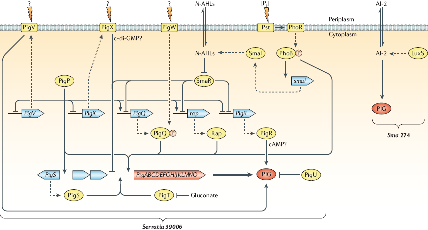111
Neil R. Williamson, Peter C. Fineran, Finian J. Leeper and George P. C. Salmond, "The Regulation and Biosynthesis of Bacterial Prodiginines." Nature Rev. Microbiol., 2006, 4, 887-899.
Full Text
The red-pigmented prodiginines are bioactive secondary metabolites produced by both Gram-negative and Gram-positive bacteria. Recently, these tripyrrole molecules have received renewed attention owing to reported immunosuppressive and anticancer properties. The enzymes involved in the biosynthetic pathways for the production of two of these molecules, prodigiosin and undecylprodigiosin, are now known. However, the biochemistry of some of the reactions is still poorly understood. The physiology and regulation of prodiginine production in Serratia and Streptomyces are now well understood, although the biological role of these pigments in the producer organisms remains unclear. However, research into the biology of pigment production will stimulate interest in the bioengineering of strains to synthesize useful prodiginine derivatives.
|

Summary of the genetic regulation of prodigiosin production in Serratia species. Activation is represented by triangular arrow-heads, repression is shown by flat arrow-heads.
|















